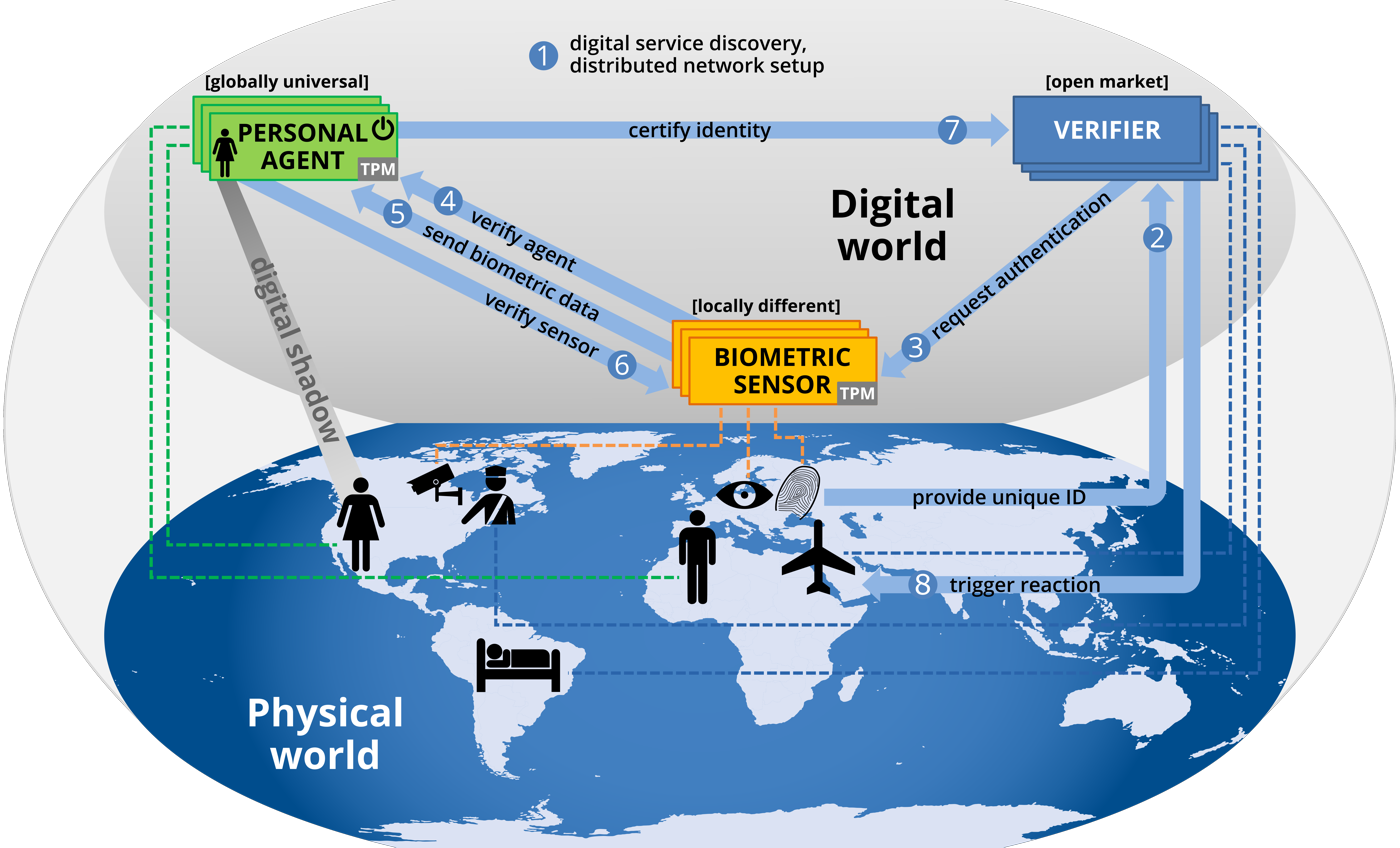Private Digital Authentication in the Physical World


How can we use digital identity for authentication in the physical world without compromising user privacy? This central question is an underlying concern for further groundbreaking developments in ubiquitous computing scenarios: enabling individuals to – for example – use public transport and other payment/ticketing applications, access computing resources on public terminals, or even cross country borders without carrying any form of physical identity document or trusted mobile device. Moving towards such a device-free infrastructure-based authentication could be easily facilitated by centralized databases with full biometric records of all individuals, authenticating and therefore tracking people in all their interactions in the digital and physical worlds. However, such centralized tracking is not compatible with fundamental human rights to data privacy. We therefore propose a fully decentralized approach to digital user authentication in the physical world, giving each individual better control over their digital and physical world interactions and data traces they leave.
In the Christian Doppler Laboratory Digidow, we associate each individual in the physical world with a personal agent in the digital world, facilitating their interactions with purely digital or digitally mediated services in both worlds. This proposal has two major issues to overcome. The first is a problem of massive scale, moving from current users of digital identity to the whole global population as the potential target group. The second is even more fundamental: by moving from trusted physical devices and centralized databases to a fully decentralized and infrastructure-based approach, we remove the currently essential elements of trust. We solve these issues based on a fundamental model for private tracking of user location and behavior, implementing it in personal agents with a complete chain of trust over multiple parties, and building yearly prototypes for benchmark use cases like border control.
An introductory talk of the general issue and the proposed architecture has recently been given at TEDxLinz and is now online on the YouTube channel. Furthermore, the basic concepts of Digidow are explained in this introduction video:
